The Company
The company belongs to the pharma industry, one of the main areas in innovation and development of new drugs and therapeutic solutions. It holds a significant position in the global market, having launched pioneering drugs for treating diseases such as epilepsy and Parkinson’s disease. This company dedicates a substantial portion of its annual revenue to research and development, restating its commitment to innovation and quality. It employs about 852 personnel and has an annual sales revenue of approximately 300 million euros. Its main products and services include developing, manufacturing, and commercializing medications.
The Challenge
The company faced significant challenges related to the efficiency of its drug manufacturing processes. A diagnostic was conducted, identifying several improvement opportunities in the material and information flows from raw materials to finished products. The main problems identified included manufacturing delays, low productivity, poor service levels, and difficulties in inventory management, affecting quality and delivery times.
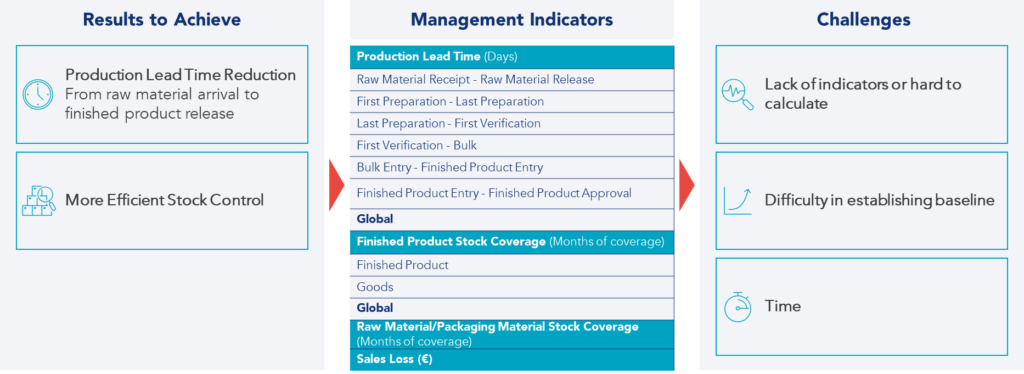
The company acknowledged the need to implement a CI culture to tackle these challenges.
The Approach
To address these challenges, the company executed a continuous improvement program. The approach began with a detailed diagnosis of the material and information flows supporting the drug manufacturing process, identifying cross-functional improvement opportunities. The main actions included:
- Defining scope and designing solutions: Critical areas were identified, and specific solutions were designed for each. This process included setting objectives to monitor and quantify the expected benefits;
- Workshops and improvement methodologies: Twelve projects were conducted over two years, with workshops following the A3 methodology for initiation, follow-up, and closure. The PDCA (Plan-Do-Check-Act) cycle was used to manage improvement actions. The approach was structured with weekly meetings with all team leaders and monthly steering meetings to review performance indicators and discuss new initiatives;
- Implementing Daily Kaizen: Daily Kaizen Level 1 and 2 meetings were implemented at all organizational levels, from management to Gemba teams. This routine made it possible to monitor KPIs on a daily basis, act on deviations with immediate countermeasures, and improve employee communication and involvement;
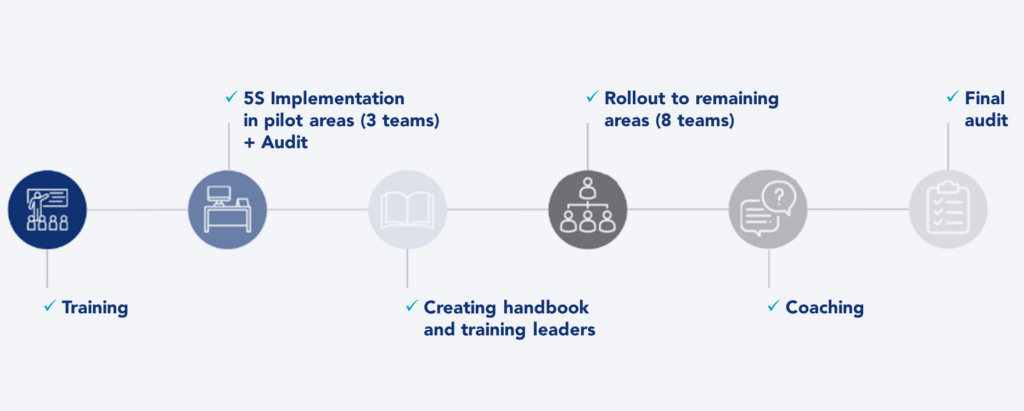
- Management and monitoring tools: A Power BI Dashboard was created to support the improvement cycle management in each area. Additionally, audits were conducted twice a year, and daily Kamishibai routines were designed to ensure the results’ sustainability;
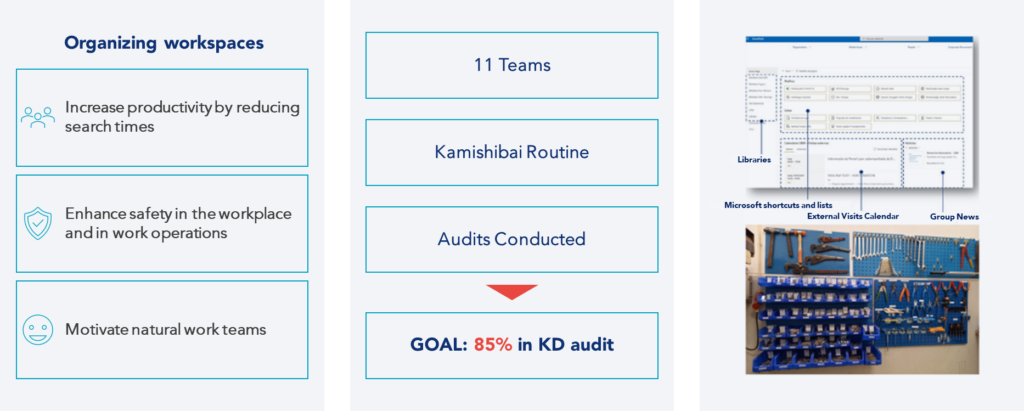
- Training and employee involvement: Training sessions were held for team leaders and employees, helping to identify problems, challenges, and improvement opportunities. Employee involvement was crucial to overcome resistance to change and consolidating a continuous improvement culture within the company;
- Specific projects and audits: The company also implemented specific projects to reduce raw material lead times, develop the artwork process, and shorten bulk release lead times, among others. Final audits and continuous coaching helped maintain focus and keep the implemented actions effective.
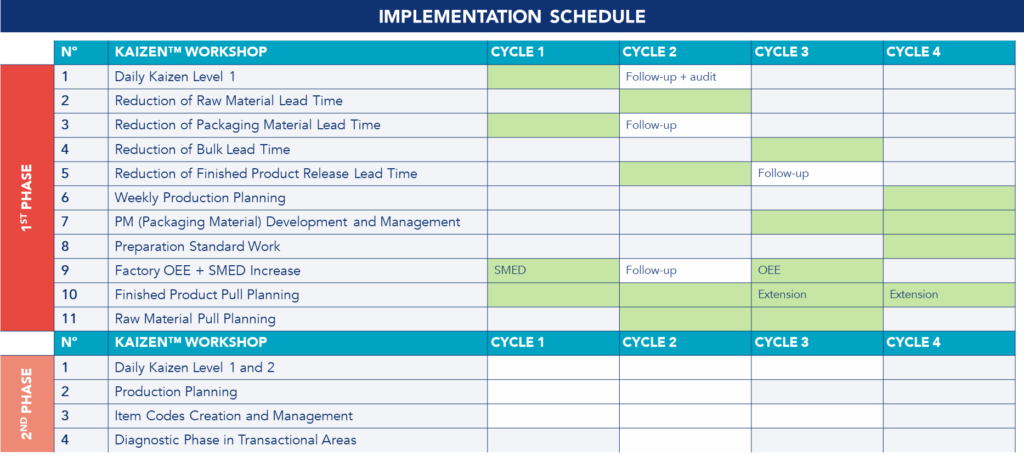
Results
The continuous improvement initiatives generated substantial and measurable results. Reference changeover times were reduced by 29%, and the use of external warehousing was reduced by 46%. Additionally, the company reduced raw material and packaging stock by 58% and finished product stock by 46%.
Beyond the quantitative results achieved, continuous improvement has become a deeply rooted practice within the company’s culture. This strategy has made it possible to introduce a new paradigm in which it is possible to change for the better every day in all areas of the company, engaging all employees.
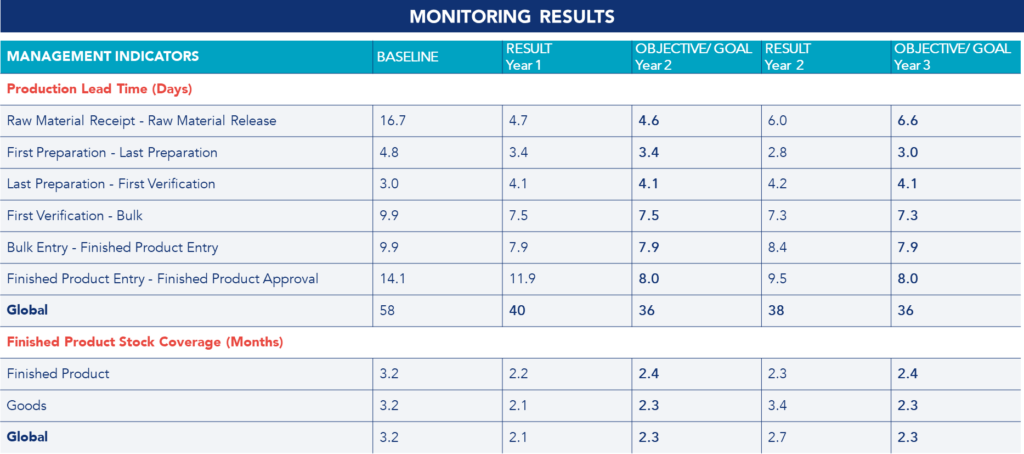
See more on Pharmaceuticals
Find out more about transformation in this sector
See more on Improvement Projects
Find out more about improving this business area
